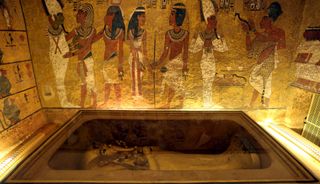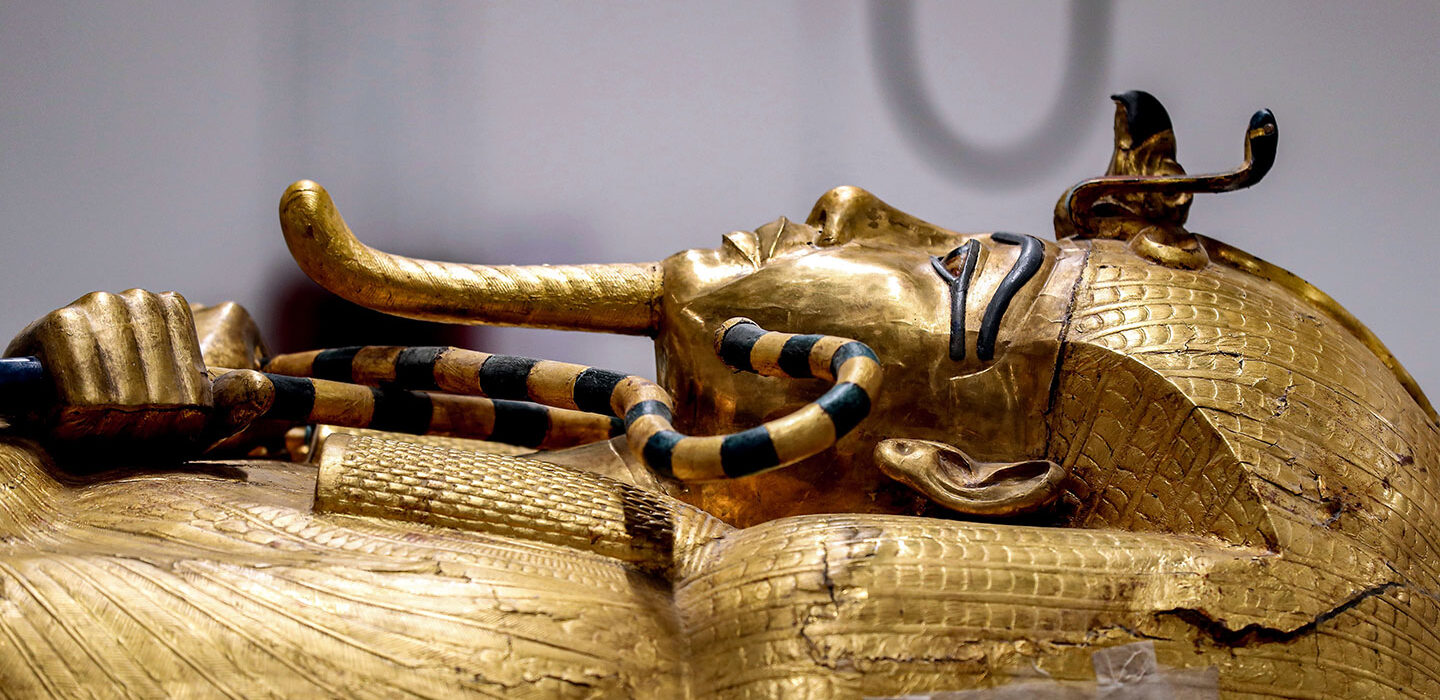Golden Throne of Tutankhamun. One of the most striking artifacts found in the burial chamber in 1922, Tutankhamen’s “golden throne”, dates back to around 1325 BC.

Displaying exquisite craftsmanship, the throne was made mainly of wood and was completely covered with a layer of pure gold. The throne, which also had partially silver parts, was decorated with semi-precious stones, glazed ceramics and colored glass. The feet of the throne, which was approximately 1 meter tall and wrapped in linen, were carved to resemble lion’s feet.

An exemplary scene from Tutankhamen’s life is seen on the front of the throne: Under the rays of the Aten, the young pharaoh is represented sitting in a comfortable position, while his wife Ankhesenamun is rubbing his shoulders with perfume. The pharaoh has a crown on his head and a thick necklace around his neck, and the queen has a beautiful wreath on her head. A gold bracelet is seen on both of their feet as a symbol of the engagement.
Egyptian Museum, Cairo
#archaeohistories






